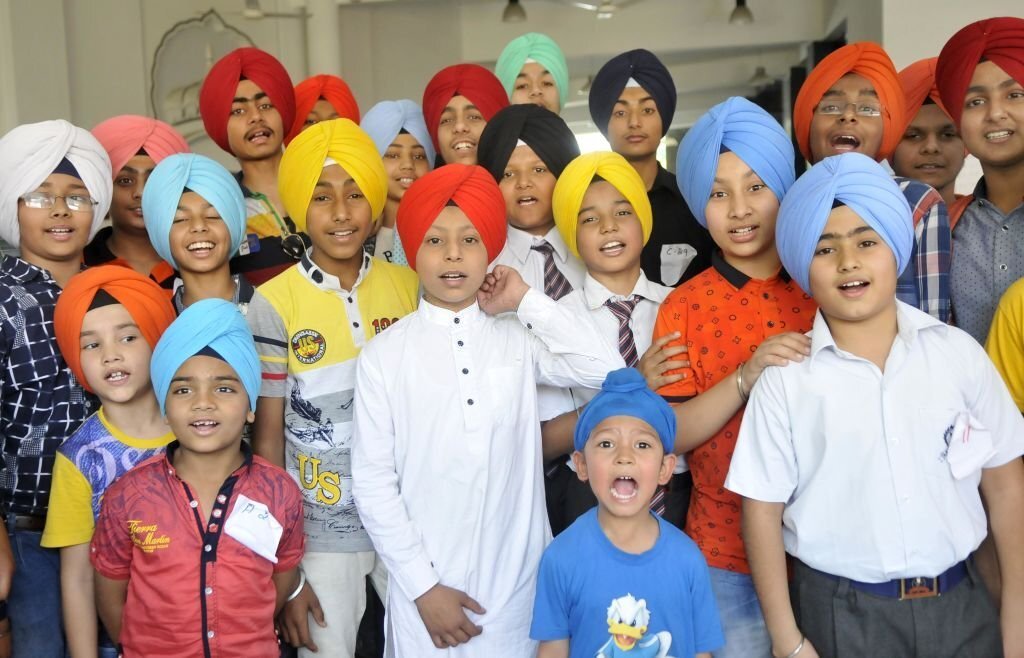Sikhism Turban Pride
Let’s look at the wonderful History of the Sikhism Turban Pride
Turban cloth can be made of various materials, but two popular options are full voile and rubia voile. Full voile is a lightweight, soft fabric that is typically made of cotton or a cotton blend. Rubia voile, on the other hand, is a more tightly woven fabric that is also lightweight and breathable.
Let’s look at the wonderful History of the Sikhism Turban Pride
Sikhism Turban Pride History With Guru Gobind Singh Ji
The history of the Sikh turban is closely associated with the influence of Guru Gobind Singh Ji, the tenth Sikh Guru.. Here is an overview of the Sikh turban history with Guru Gobind Singh Ji:
The Khalsa and the Five Kakaars
Guru Gobind Singh Ji established the Khalsa in 1699, a community of initiated Sikhs who were bound by a distinct code of conduct. As part of the initiation ceremony, Guru Gobind Singh Ji introduced the concept of the Five Ks (Kakaars), which are articles of faith that initiated Sikhs are required to maintain. One of the Five Ks is Kesh, uncut hair, which forms the basis for wearing the turban.
Baisakhi and the Birth of the Khalsa
On the auspicious day of Baisakhi in 1699, Guru Gobind Singh Ji called together thousands of Sikhs and publicly initiated them into the Khalsa. During the initiation, Guru Gobind Singh Ji asked for volunteers who were willing to sacrifice their lives for their faith. Five beloved Sikhs, known as the Panj Pyare, came forward, and Guru Gobind Singh Ji initiated them and subsequently requested them to initiate him as well. This event marked the birth of the Khalsa and solidified the turban as an integral part of Sikh identity.
The Keski
Guru Gobind Singh Ji introduced the practice of wearing a Keski, a small under-turban, to support the main turban. The Keski helps maintain the cleanliness of the hair and provides a foundation for tying the turban securely
For tying a turban, general overview is here
Preparation
Start with clean and neatly combed hair.
as well as wear a Keski, a small under-turban
After then Choose a long and wide piece of fabric known as a turban cloth. The length can vary depending on the desired style and the size of the turban.
First Point
Hold one end of the turban cloth against your forehead slightly to the right side, leaving some length hanging down over your shoulder.
Make sure the turban cloth is centered on your forehead and extends towards the back of your head.
Secondly
Wrapping the Cloth
Gradually wrap the turban cloth around your head, making neat and even rounds.
Ensure that each round covers the previous one, keeping the turban tight and secure.
Third and Final Steps
Once the turban is wrapped around your head, tuck the loose end of the cloth neatly and securely.
Lastly, Use a pin or a small decorative accessory, such as a brooch or a “dumalla,” to fasten the end of the turban and provide a finishing touch.
It’s important to note that tying a Sikh turban is a skill that takes time to master.
Finally, the history of the Sikh turban embodies the religious, cultural, and social values held by the Sikh community. It represents Sikh pride, spirituality, and adherence to Sikh principles in both historical and contemporary contexts.


